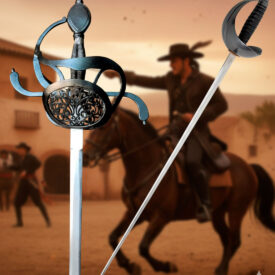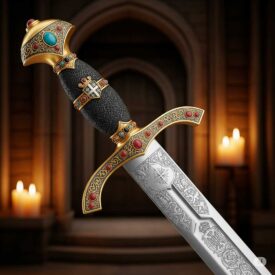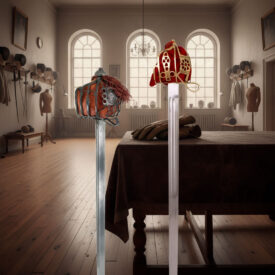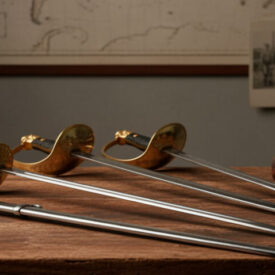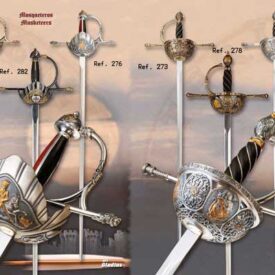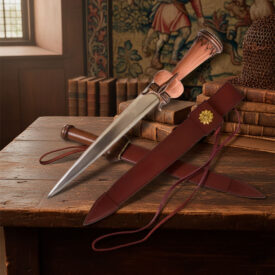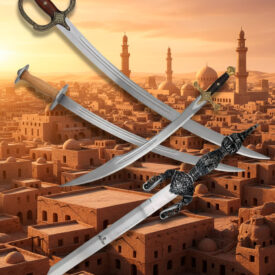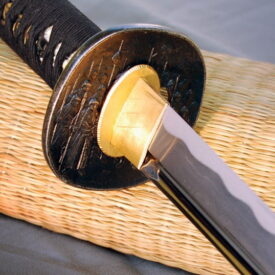“`html
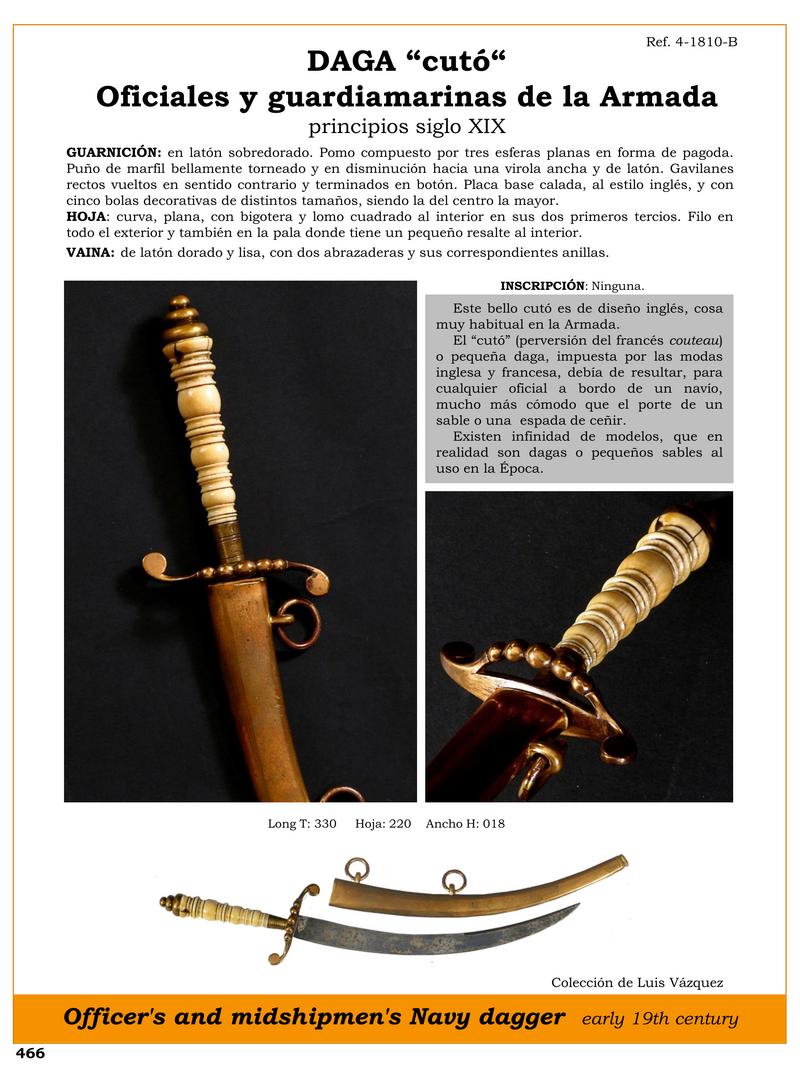
ENCYCLOPEDIA OF SPANISH SWORDS
CUTÓ DAGGER. Author: Vicente Toledo Momparler (sword expert)
| Reference | 4-1810-B |
|---|---|
| Name | DAGGER “cutó” |
| Period | Early 19th century |
| Guard | In gilded brass. Knob made up of three flat spheres shaped like a pagoda. Beautifully turned ivory grip tapering towards a wide brass ferrule. Straight quillons turned in the opposite direction and finished with buttons. Pierced base plate in the English style, with five decorative balls of different sizes, the central one being the largest. |
| Blade | Curved, flat, with a ricasso and square spine on the inside for its first two thirds. Cutting edge along the entire outside and also on the blade where it has a small rise on the inside. |
| Scabbard | Made of gilded brass and smooth, with two clamps and corresponding rings. |
| Inscription | None. |
| Description | This beautiful cutó is of English design, which was very common in the Navy. The “cutó” (a distortion of the French couteau) or small dagger, imposed by English and French fashion, must have been much more comfortable for any officer aboard a ship than carrying a saber or a side sword. There are countless models, which are really daggers or small sabers used during the period. |
| Total Length | 330 mm |
| Blade Length | 220 mm |
| Blade Width | 18 mm |
| Collection | Collection of Luis Vázquez |
| Type | Dagger of officers and midshipmen of the Navy |
“`
